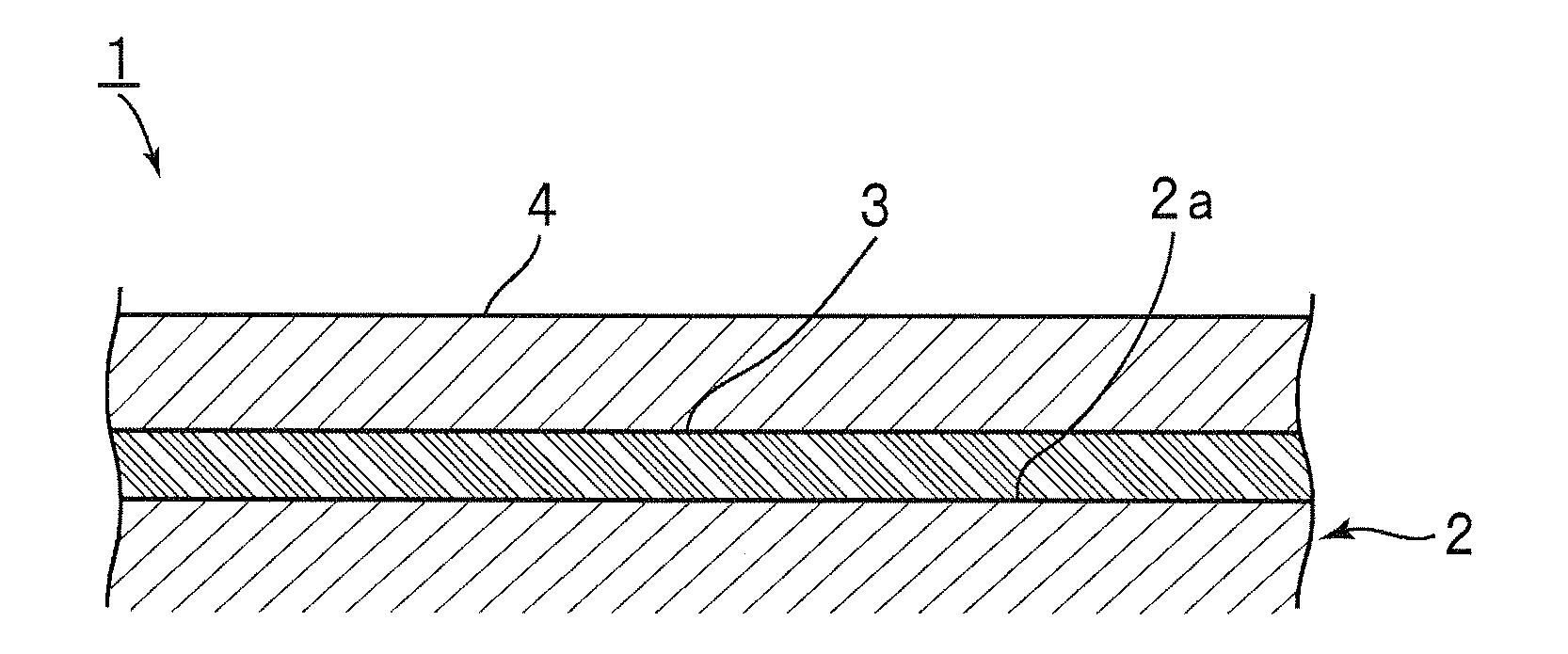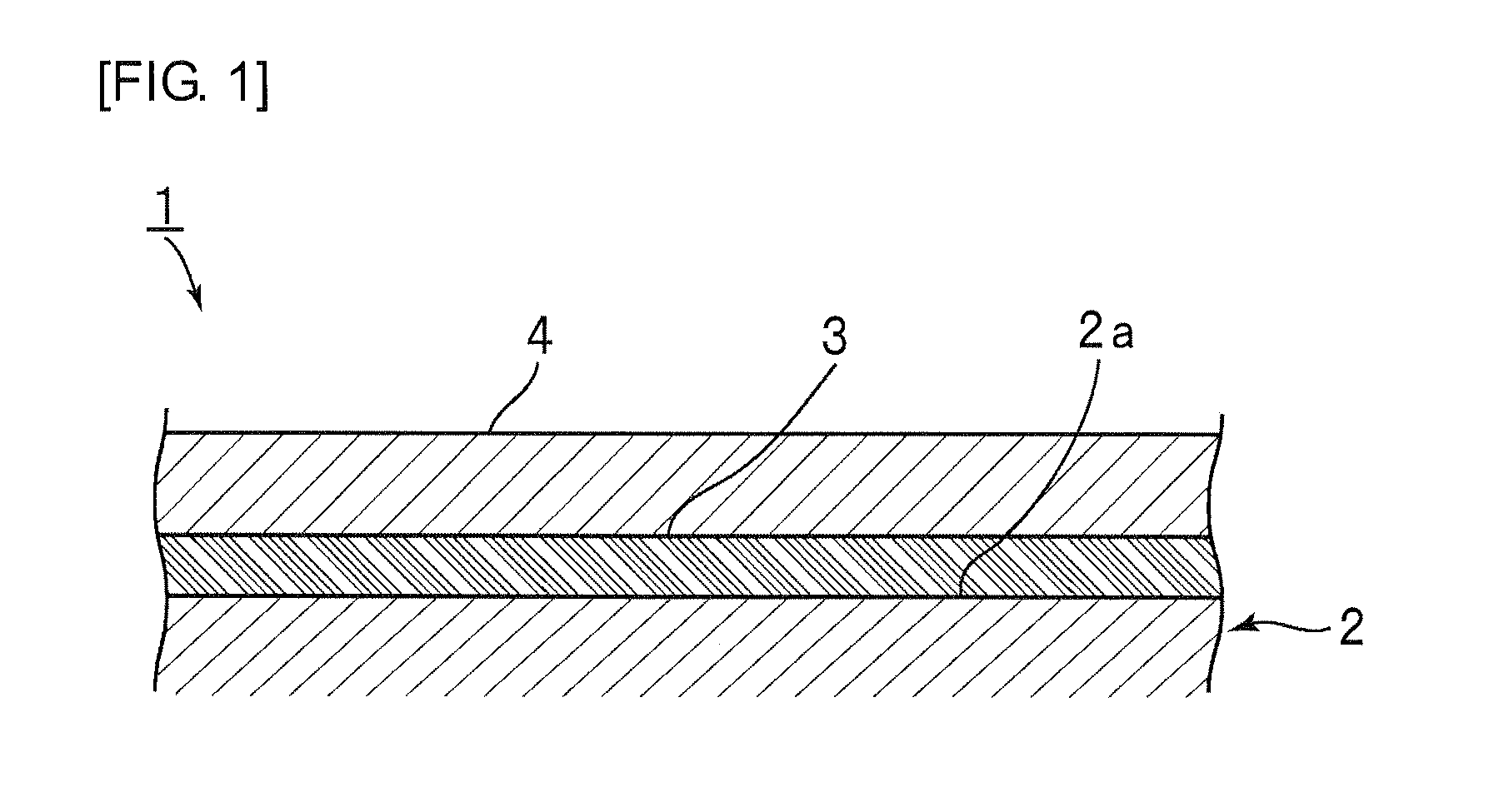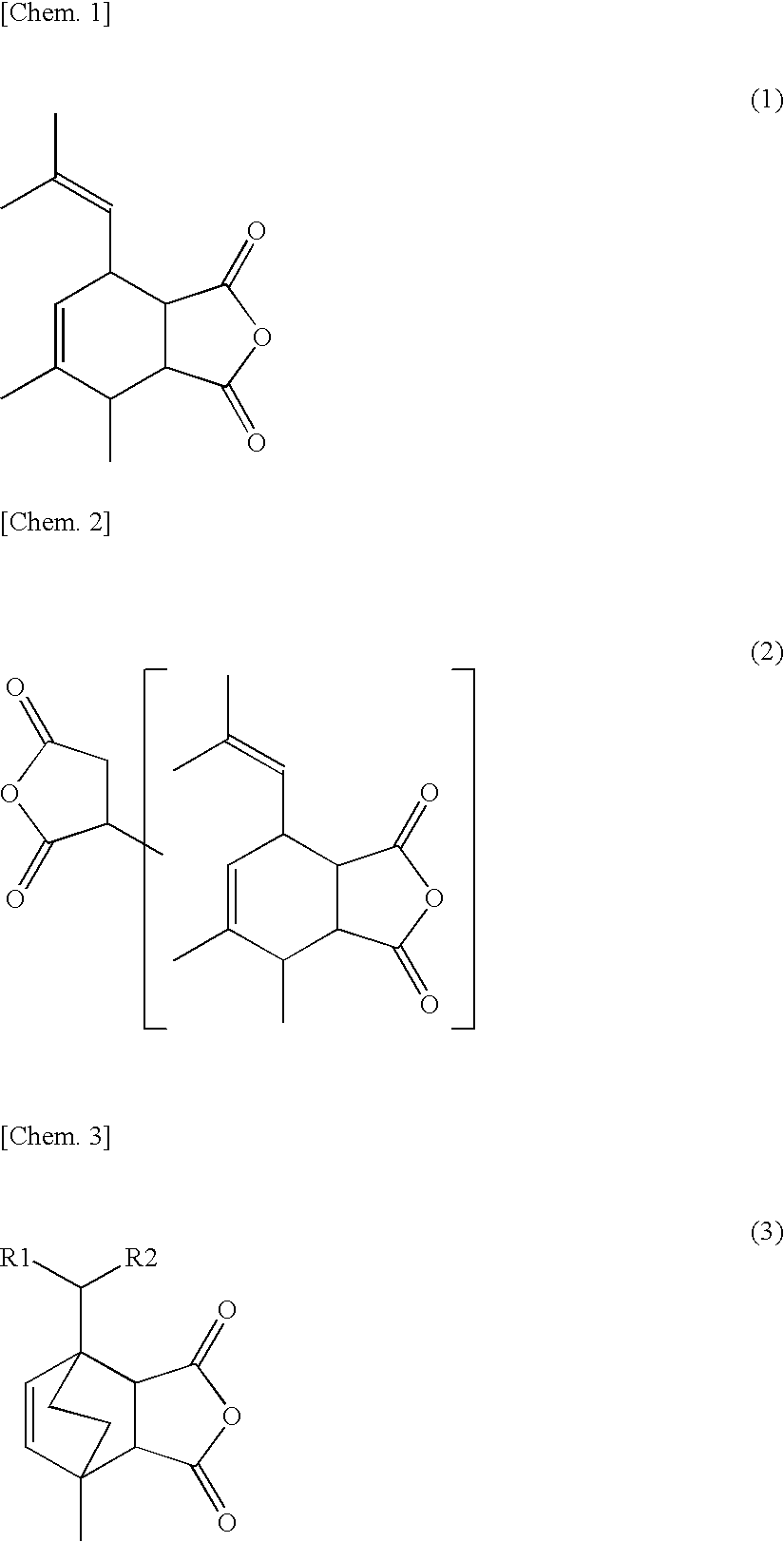Insulating sheet and multilayer structure
a technology of insulating sheets and multi-layer structures, applied in the field of insulating sheets, can solve the problems of difficult laser processing, punching, drill piercing, etc., and achieve the effect of efficient dissipation
- Summary
- Abstract
- Description
- Claims
- Application Information
AI Technical Summary
Benefits of technology
Problems solved by technology
Method used
Image
Examples
example 1
[0224]The compounds were mixed and kneaded with one another at a ratio shown in the following Table 1 with a homodisper to prepare an insulating material.
[0225]The prepared insulating material was applied to a 50-μm thick release PET sheet so that the thickness of the insulating material was 100 μm. The applied insulating material was dried for 30 minutes in a 90° C. oven to prepare an insulating sheet on the PET sheet.
examples 2 to 18
, Reference Example 1, and Comparative Examples 1 to 3
[0226]Except that the types and amounts of the compounds were changed as shown in the following Tables 1 to 3, insulating materials were prepared in the same manner as in Example 1 and insulating sheets each were prepared on the PET film.
Evaluations on insulating sheets of Examples 2 to 18, Reference Example 1, and Comparative Examples 1 to 3
(1) Handleability
[0227]A multilayer sheet including the PET sheet and the insulating sheet formed on the PET sheet was cut out into a plane shape having a size of 460 mm×610 mm to provide a test sample. By the use of the provided test sample, the handleability upon peeling the uncured insulating sheet off the PET film at room temperature (23° C.) was evaluated according to the following criteria.
[Evaluation Criteria of Handleability]
[0228]o: The insulating sheet was not deformed and was easily peeled off.
[0229]Δ: The insulating sheet was peeled off, but the sheet was elongated or broken.
[0230...
PUM
| Property | Measurement | Unit |
|---|---|---|
| Temperature | aaaaa | aaaaa |
| Temperature | aaaaa | aaaaa |
| Fraction | aaaaa | aaaaa |
Abstract
Description
Claims
Application Information
 Login to View More
Login to View More - R&D
- Intellectual Property
- Life Sciences
- Materials
- Tech Scout
- Unparalleled Data Quality
- Higher Quality Content
- 60% Fewer Hallucinations
Browse by: Latest US Patents, China's latest patents, Technical Efficacy Thesaurus, Application Domain, Technology Topic, Popular Technical Reports.
© 2025 PatSnap. All rights reserved.Legal|Privacy policy|Modern Slavery Act Transparency Statement|Sitemap|About US| Contact US: help@patsnap.com



